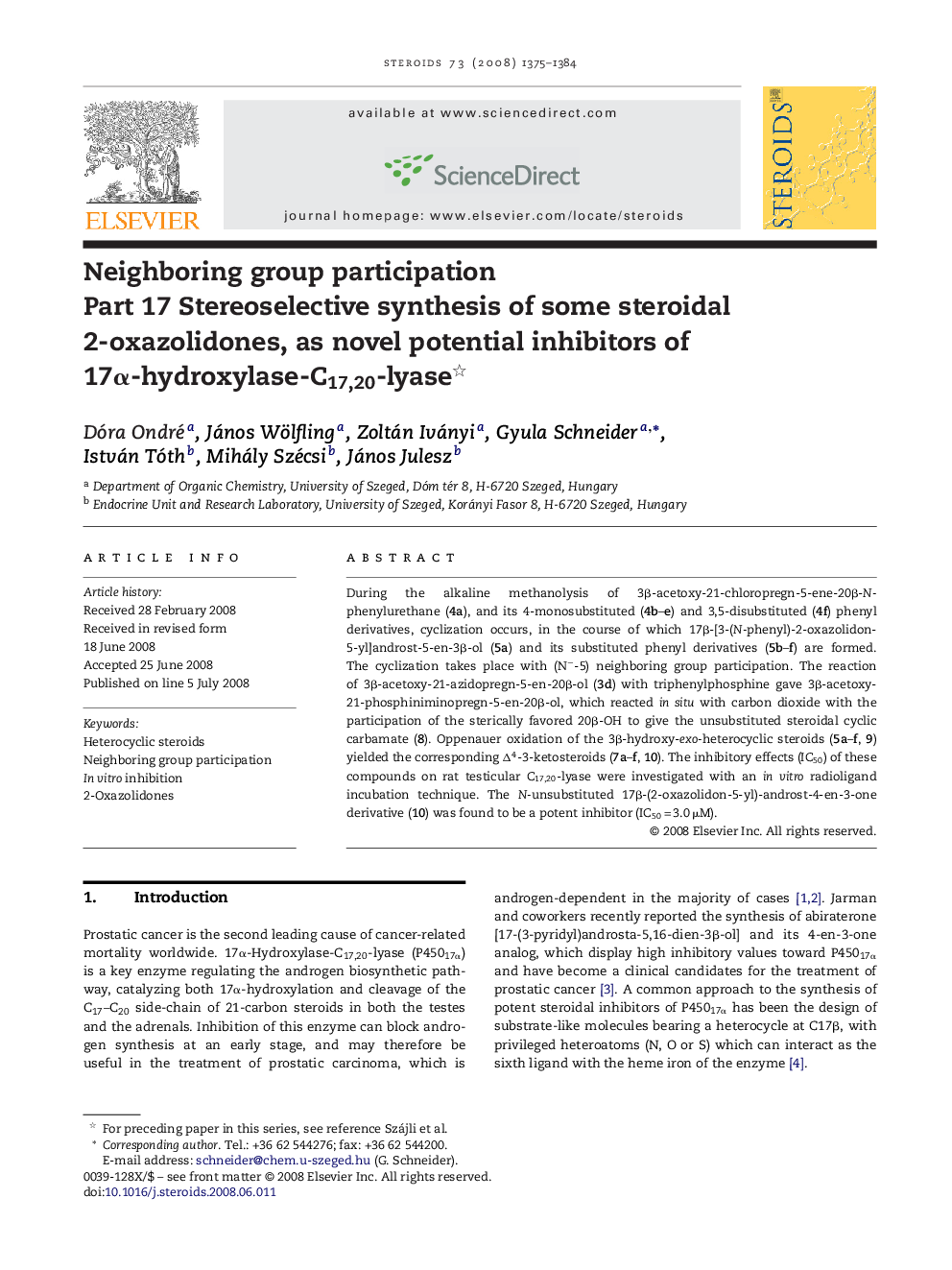| Article ID | Journal | Published Year | Pages | File Type |
|---|---|---|---|---|
| 2028689 | Steroids | 2008 | 10 Pages |
During the alkaline methanolysis of 3β-acetoxy-21-chloropregn-5-ene-20β-N-phenylurethane (4a), and its 4-monosubstituted (4b–e) and 3,5-disubstituted (4f) phenyl derivatives, cyclization occurs, in the course of which 17β-[3-(N-phenyl)-2-oxazolidon-5-yl]androst-5-en-3β-ol (5a) and its substituted phenyl derivatives (5b–f) are formed. The cyclization takes place with (N−-5) neighboring group participation. The reaction of 3β-acetoxy-21-azidopregn-5-en-20β-ol (3d) with triphenylphosphine gave 3β-acetoxy-21-phosphiniminopregn-5-en-20β-ol, which reacted in situ with carbon dioxide with the participation of the sterically favored 20β-OH to give the unsubstituted steroidal cyclic carbamate (8). Oppenauer oxidation of the 3β-hydroxy-exo-heterocyclic steroids (5a–f, 9) yielded the corresponding Δ4-3-ketosteroids (7a–f, 10). The inhibitory effects (IC50) of these compounds on rat testicular C17,20-lyase were investigated with an in vitro radioligand incubation technique. The N-unsubstituted 17β-(2-oxazolidon-5-yl)-androst-4-en-3-one derivative (10) was found to be a potent inhibitor (IC50 = 3.0 μM).
